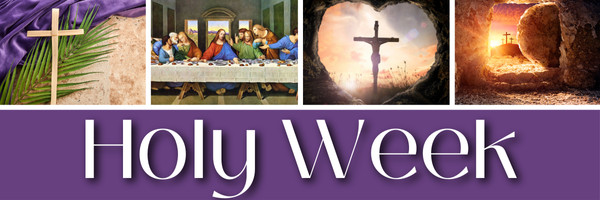St Francis Through the Eyes of His Friend St Bonaventure
There is so much to write about in this marvelous account of the life of one of my own personal heroes, the saint whose witness led me back to the Church, Francis of Assisi. However, I will focus on one aspect of Bonaventure's tribute to Francis. He was his friend. In the beginning of Chapter Eleven of his eyewitness account of his friend's life, he speaks of Francis' love for the Bible, the Sacred Scripture.Francis loved and lived the Bible, the Sacred Scriptures. He was a man in a dynamic relationship with the Living Word, Jesus Christ. Francis was an "evangelical" Catholic, in love with the "evangel", the Greek word for Good News, Jesus Christ. Are we?

Francis of Assisi in prayer
Highlights
Catholic Online (https://www.catholic.org)
10/4/2018 (6 years ago)
Published in Christian Saints & Heroes
Keywords: St. Francis, St. Bonaventure, Il Poverello, saints, Major Legend, evangelical Catholic, canticle of the sun, Deacon Keith Fournier
CHESAPEAKE, VA (Catholic Online) - It is often our friends who really know us. Their testimony opens up the deeper meaning of our lives for others. So it was with Francis, the little poor man of Assisi. His friend was named Bonaventure. And his testimony opens up the deeper meaning of the holy life and death of this poor man of Assisi.
The Major Legend written by St. Bonaventure is not a biography, at least in the strictest sense. It does not follow a chronological order of the life of Francis. St. Bonaventure writes of the little poor man of Assisi from firsthand experience,as his friend.
There is so much to write about in this marvelous account of the life of one of my own personal heroes, the saint whose witness led me back to the Church, Francis of Assisi. However, I will focus on one aspect of Bonaventure's tribute to Francis. In the beginning of Chapter Eleven of his eyewitness account of his friend's life, he speaks of Francis' love for the Bible, the Sacred Scripture:
"Unflagging zeal for prayer with a continuing exercise of virtue had led the man of God to such serenity of mind that although he had no expertise in Sacred Scripture through learning, his intellect, nevertheless enlightened by the splendor of eternal light, probed the depths of scripture with remarkable incisiveness."
"For his genius, pure and unstained, penetrated hidden mysteries, and where the knowledge of teachers stands outside, the passion of the lover entered. Whenever he read the Sacred Books, and something struck his mind, he imprinted it tenaciously on his memory because he did not grasp in vain what his attentive mind heard for he would mull over it with affection and constant devotion."
Francis loved and lived the Bible, the Sacred Scriptures. He was a man in a dynamic relationship with the Living Word, Jesus Christ. Through an intimate communion of prayer - and the continual prayerful reading of the Scriptures - Francis thus became a living letter of Christ for others. (2 Cor. 3: 1-3) He calls us to do the same. Francis was an "evangelical" Catholic, in love with the "evangel", the Greek word for Good News, Jesus Christ. Are we?
The Catechism of the Catholic Church reminds us that "Christianity is the religion of the "Word" of God, not a written and mute word, but incarnate and living. If the Scriptures are not to remain a dead letter, Christ, the eternal Word of the living God, must, through the Holy Spirit, open (our) minds to understand the Scriptures. (CCC# 108) This was the lived experience of Francis of Assisi - and it can become ours as well.
Bonaventure's account of his friend, mentor and spiritual father weaves a captivating picture of a poor, little man from Assisi who fully lived the life of grace and was completely conformed to Jesus Christ. It sets that life before the reader as an example to follow, imbibe and imitate - a life of penance, conversion, renunciation, self emptying, transforming and redemptive love.
These themes are developed by Bonaventure, a theologian of the highest order, in beautifully inspiring writing which invites the reader into his or her own encounter with the source of Francis' profound spirituality, Jesus Christ.
Bonaventure presents a Francis conformed and configured to crucified love over time through an ever deepening, dynamic relationship of living faith which manifested the timeless kingdom in the heart of the world. This pattern of Francis' life is to be imitated, embraced and appropriated in every human life. The life of the little poor man is a light from heaven meant to illuminate our own lives and guide us into the fire of God's love.
Living faith, like the faith demonstrated in Francis, mediates the mystery of God's loving plan for others. It can also open our spiritual eyes to behold God's design in the Book of Creation, the Book of Scripture. Bonaventure writes of Francis:
"Aroused by everything to divine love, he rejoiced in all the works of the Lord's hands and through their delightful display he rose into their life-giving reason and cause. In beautiful things he contuited Beauty itself and through the footprints impressed in things he followed his beloved everywhere, out of them all making a ladder through which he could climb up to lay hold of him who is utterly desirable".
Bonaventure offers a lesson book by telling the story of Francis in this way. It leads the reader to the One whom Francis loved, served, imitated and became. At the center of it all we find the Crucified Christ, the Word made flesh, Love Incarnate, stretched out on the wooden altar, which is the ladder of ascent and descent. This crucified Christ is the Center of the Universe and brings about its recapitulation as He is poured out in kenosis, the Greek word for being emptied out.
Philippians 2: 1-12 records an early, perhaps even pre-Pauline hymn that is central to the entire framework of the Major Legend because it reveals the "kenosis", the self emptying of the Second Person of the Trinity and is the very core of the response Francis made to the continual invitation he received from Jesus:
"Have among yourselves the same attitude that is also yours in Christ Jesus, Who, though he was in the form of God, did not regard equality with God something to be grasped. Rather, he emptied himself, taking the form of a slave, coming in human likeness; and found human in appearance, he humbled himself, becoming obedient to death, even death on a cross.
Because of this, God greatly exalted him and bestowed on him the name that is above every name, that at the name of Jesus every knee should bend, of those in heaven and on earth and under the earth, and every tongue confess that Jesus Christ is Lord, to the glory of God the Father."
Jesus is the living Word sent from the Father with an ongoing mission to bring all men and women - and the entire cosmos - back to the Father. He is the One through whom the world was first created and in whom it is now being re-created. This pattern of emanation and return, this recapitulation of all things in Christ, is prominent in Patristic literature, the writing of the early fathers of the undivided Christian Church.
It is also the foundation for the theology developed by Bonaventure in the Major Legend. Most importantly, it is embodied in the little Poor man who Bonaventure wants the world to see through reading the Major Legend. He compiled the Major Legend to show the world Francis, whose life is a path to follow to nuptial union with Jesus and the fullness of Trinitarian communion.
Francis teaches us, through the Book of his own life, that all men and women are called and made capable by grace to return back to the Father through the Son, by the Spirit,moving from image into likeness. In addition, that like him we bring the cosmos along as microcosm and mediator.
The Crucified Christ is embraced by Francis with a self emptying love which is so passionate and consuming that he becomes the One whom he desires. Jesus is manifested in and through Francis. Through grace he also experiences transformed human desires and cultivates the spiritualized senses of the hierarchic man. As his response to God's invitations unfolds, Francis ultimately offered Himself with and in Christ for the sake of world. This is the fullness of the meaning of crucified and cruciform love.
The Major Legend challenges the reader to view the life of Francis as the vocation of every man and every woman who responds to the invitation of Jesus. Using words as symbols, the Seraphic Doctor shows Francis, a word walking, as a model for all of us who bear the name Christian.
Francis thus becomes a word from THE WORD, Jesus. Bonaventure was a friend and a disciple of Francis. When he looked at Francis he saw Jesus Christ. Bonaventure, like his friend Francis, was also a mystic. To him the Spirit of Francis is the Spirit of Jesus and witness to Jesus is the Spirit of Prophecy. (Revelations 19:10)
Reference to the imagery of the Book of Revelations is laced throughout the Major Legend. It was written in an age when that book and other biblical books of the apocalyptic genre were of great interest and were being used, in various ways, to interpret the times.
The full flourishing of the work of grace in Francis is the stigmata, a Divine seal imprinted in his body. The Cross revealed in the life and stigmata of Francis is the Cross of Jesus Christ, which is the ladder between heaven and earth and the altar of sacrifice upon which we are all invited to die. As the Seraphic Doctor, Bonaventure, wrote in the prologue of the Major Legend:
"The grace of God has appeared in these last days in his servant Francis to all who are truly humble and lovers of holy poverty, who, while venerating in him God's superabundant mercy, learn by his example to reject whole heartedly ungodliness and worldly passions, to live in conformity with Christ and to thirst after blessed hope with unflagging desire."
With these words, which incorporate St Paul's letter to Titus 2:11, Bonaventure begins the Major Legend and lays out the challenges to the reader to follow in the footsteps of the little poor man of Assisi by walking with him up the mountain of Calvary and finding the path to transfiguration.
The Major Legend was completed by Bonaventure after his own experience on the mountain of LaVerna, the place where Francis received the wounds of Christ, the stigmata. This is the place where Bonaventure writes, "that angelic man who descended from the mountain (LaVerna) carrying with him an image of the crucified not handmade on tablets of stone or wood, but inscribed in the members of his flesh by the finger of the Living God"
The full revelation of this kind of realized eschatology in Francis became most clear to Bonaventure on La Verna. This experience, where Francis was stigmatized, was the Mount of Transfiguration in the life and ministry of Francis. There he became joined to the Transfigured Christ, who was crucified in and for love.
LaVerna is what theologians call a hermeneutic, a lens through which Francis' life and meaning comes together for Bonaventure. The stigmata given on that Mountain is the seal confirming in the flesh of Francis the fullness of grace that was present in his life. Francis was a sign, a human sacramental of sorts, and the exemplar of evangelical perfection.
He was, by grace, transformed into Jesus the Word, thus becoming what I call a word walking. This transfiguration thus also becomes a lens through which the life, spiritual progression, holiness and ministry of Francis comes into sharp focus for Bonaventure. He has his own experience on that same mountain and is never the same.
This unique connection between the Mountain of Golgotha and the Mountain of Transfiguration is unique to Francis - and unique to the theology developed by Bonaventure. Certainly, the Mount of Transfiguration is the central place in Eastern Christian Theology with the Eastern emphasis on deification as a way to articulate the work of transforming grace. The Incarnation is viewed in the East as including the entire Christ event from conception to Ascension.
Yet, there is little or no reference to a connection between these two mountains in Eastern Christian sources. Only in the Christological anthropology developed in the work of St. Nicholas Kavasalis, a fourteenth century Byzantine layman and mystic, could we even find a hint of this kind of connection:
"It was when he mounted the cross and died and rose again that human freedom was won, that human form and beauty were created." This is a place for further research on the synergies between Eastern and Western mystical and spiritual theology - and their meeting in Bonaventure's theology. I hope to be able to do it.
On this Memorial of St. Francis, St. Bonaventure's Major Legend introduces us to Francis through the Eyes of a Friend and Eye Witness.
----
Deacon Keith Fournier is the Editor in Chief of Catholic Online and the founder of Common Good Foundation and Common Good Alliance. A Deacon for twenty three years, he has been married for forty three years. He and his wife Laurine have five grown children and seven grandchildren. Long active at the intersection of faith and culture, Attorney Fournier is also a constitutional lawyer and public policy advocate.
---
'Help Give every Student and Teacher FREE resources for a world-class Moral Catholic Education'
Copyright 2021 - Distributed by Catholic Online
Join the Movement
When you sign up below, you don't just join an email list - you're joining an entire movement for Free world class Catholic education.

-

- Stations of the Cross
- Easter / Lent
- 5 Lenten Prayers
- Ash Wednesday
- Living Lent
- 7 Morning Prayers
- Mysteries of the Rosary
- Litany of the Bl. Virgin Mary
- Popular Saints
- Popular Prayers
- Female Saints
- Saint Feast Days by Month
- Pray the Rosary
The Way of the Cross: A Good Friday Reflection on Christ’s Final Journey
The Many Reasons Why We Call it Good Friday
“It Is Finished”: The Silence of Good Friday and the Triumph of the Cross
Daily Catholic
 Daily Readings for Sunday, April 20, 2025
Daily Readings for Sunday, April 20, 2025St. Marian: Saint of the Day for Sunday, April 20, 2025
 Children's Prayer For Parents: Prayer of the Day for Sunday, April 20, 2025
Children's Prayer For Parents: Prayer of the Day for Sunday, April 20, 2025 Daily Readings for Saturday, April 19, 2025
Daily Readings for Saturday, April 19, 2025 St. Alphege: Saint of the Day for Saturday, April 19, 2025
St. Alphege: Saint of the Day for Saturday, April 19, 2025- Stewardship Prayer: Prayer of the Day for Saturday, April 19, 2025
![]()
Copyright 2025 Catholic Online. All materials contained on this site, whether written, audible or visual are the exclusive property of Catholic Online and are protected under U.S. and International copyright laws, © Copyright 2025 Catholic Online. Any unauthorized use, without prior written consent of Catholic Online is strictly forbidden and prohibited.
Catholic Online is a Project of Your Catholic Voice Foundation, a Not-for-Profit Corporation. Your Catholic Voice Foundation has been granted a recognition of tax exemption under Section 501(c)(3) of the Internal Revenue Code. Federal Tax Identification Number: 81-0596847. Your gift is tax-deductible as allowed by law.






 Daily Readings for Sunday, April 20, 2025
Daily Readings for Sunday, April 20, 2025 St. Marian: Saint of the Day for Sunday, April 20, 2025
St. Marian: Saint of the Day for Sunday, April 20, 2025 Children's Prayer For Parents: Prayer of the Day for Sunday, April 20, 2025
Children's Prayer For Parents: Prayer of the Day for Sunday, April 20, 2025 St. Alphege: Saint of the Day for Saturday, April 19, 2025
St. Alphege: Saint of the Day for Saturday, April 19, 2025

